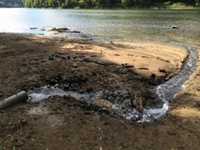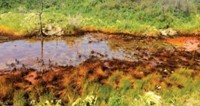Advertisement
Grab your lab coat. Let's get started
Welcome!
Welcome!
Create an account below to get 6 C&EN articles per month, receive newsletters and more - all free.
It seems this is your first time logging in online. Please enter the following information to continue.
As an ACS member you automatically get access to this site. All we need is few more details to create your reading experience.
Not you? Sign in with a different account.
Not you? Sign in with a different account.
ERROR 1
ERROR 1
ERROR 2
ERROR 2
ERROR 2
ERROR 2
ERROR 2
Password and Confirm password must match.
If you have an ACS member number, please enter it here so we can link this account to your membership. (optional)
ERROR 2
ACS values your privacy. By submitting your information, you are gaining access to C&EN and subscribing to our weekly newsletter. We use the information you provide to make your reading experience better, and we will never sell your data to third party members.
Environment
Fluorescence Spectroscopy Spots Fracking Contaminants In Water
Environment: Researchers use 3-D technique to analyze water released during methane extraction
by Erika Gebel
December 10, 2012

Rocks deep within the Earth harbor a wealth of natural gas, but the full environmental impact of extracting this resource remains unclear. Now, researchers have developed a spectroscopic method that can scan water released by the methane extraction process and detect harmful contaminants in it (Environ. Sci. Technol., DOI: 10.1021/es303866k).
One type of hydraulic fracturing, or ‘fracking,’ involves driving fluid into coal beds to create fractures. Methane travels up through the fractures for collection by teams at the surface. Water bubbles up with this methane to form basins around the gas production site.
To extraction companies, this water is a nuisance, says Jörg Drewes of the Colorado School of Mines. Because the water is brackish, he says, the companies can’t dispose of it by dumping it into local waterways. To do so, they would need to first remove the salts and any possible contaminants. But developing an effective treatment requires knowing which chemicals end up in these basins, and scientists know little about that, Drewes says.
Drewes and his colleagues thought a method called three-dimensional fluorescence spectroscopy could help. Most fluorescence methods work by shining a certain wavelength of light on a sample to excite chemicals inside and then identifying the compounds using the light they emit. In the 3-D version, researchers repeat this process quickly over a range of excitation wavelengths. By doing so, scientists can detect more chemicals than they could with other spectroscopic techniques, and without needing to know much about what the samples contain, Drewes says.
To test the method, the researchers collected basin water samples from four major methane production wells in Rocky Mountain states: the Atlantic Rim Basin, the Powder River Basin, the Raton Basin, and the San Juan Basin. Back at the lab, the team recorded 3-D fluorescence spectra on the samples. To help identify signatures of specific chemicals in these spectra, the researchers also collected data on water they’d spiked with chemicals they thought they’d find in the basins, such as agents used in the fracking process.
The team found that each basin produced unique spectra. Water from the Raton and San Juan basins produced intense peaks that matched those corresponding to a friction reducer, a type of chemical used in fracking, suggesting that the extraction process had contaminated those basins. Meanwhile, water from the Powder River and Atlantic Rim basins contained acetate, which is a byproduct of bacterial methane production, meaning, Drewes says, “these basins are still generating methane gas.” There may be ways for natural gas companies to stimulate these microbes to produce gas in addition to what the companies have extracted from underground, he adds.
Diane McKnight of the University of Colorado, Boulder, calls the method robust, pointing to its ability to identify a wide range of compounds and to do so with scans that take only about 20 minutes. She says such a technique should help regulators keep up with the explosion in new fracking ventures across the country.




Join the conversation
Contact the reporter
Submit a Letter to the Editor for publication
Engage with us on Twitter